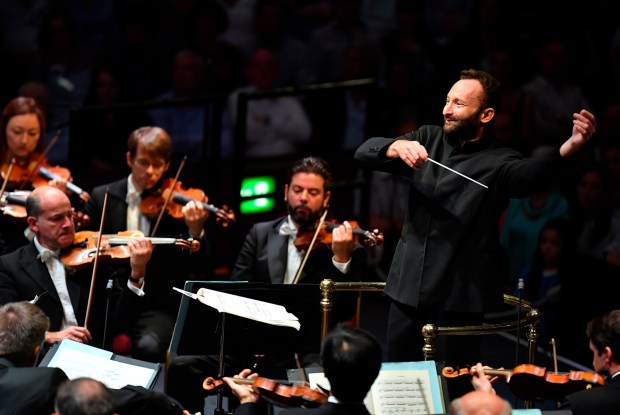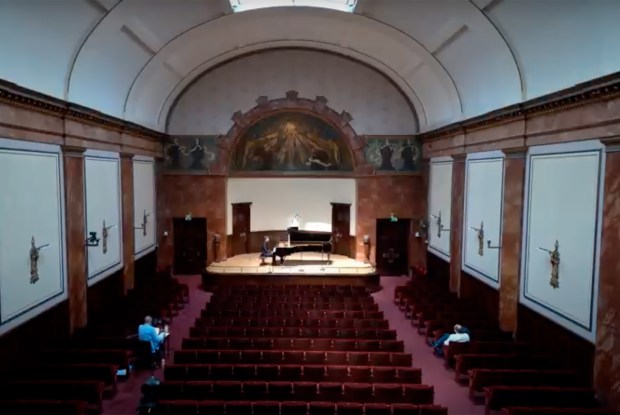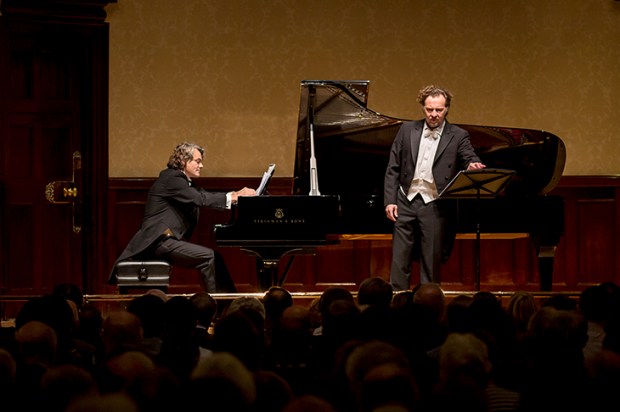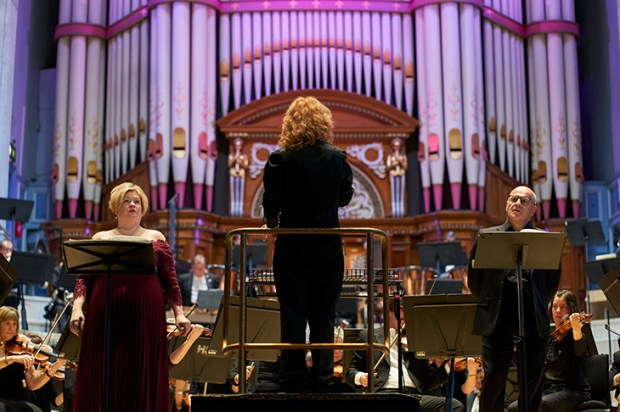Does London need another concert hall? Or, to put it more precisely, does London need another chamber music hall? The recent opening of Milton Court in the Barbican begs this question: a pertinent one since we already hold the world record for full-time concert spaces of fewer than a thousand seats, and must come equal first for symphony-size halls. We also, with the Royal Albert Hall, hold the world record for a jumbo-size venue, fully twice the capacity of a normally large auditorium such as, for example, the one in the Sydney Opera House.
But even in these financially difficult times there remains a strong thirst for expanding our cultural resources. The blurb for the new hall puts the latest expansion like this: ‘With the opening of Milton Court, the new cultural quarter will stretch from the Guildhall School of Music’s two buildings and the Barbican Hall on Silk Street, up to the Barbican’s two newly opened cinemas, and northwards to LSO St Luke’s on Old Street, offering a richly varied range of venues and performances spaces.’ An outsider might think that with the Purcell Room, the Queen Elizabeth Hall, the Wigmore Hall, Cadogan Hall, St John’s Smith Square, the Kings Place Halls, the Blackheath Halls, Conway Hall, the Roundhouse, the Amaryllis Fleming Hall and Britten Theatre at the Royal College of Music, Duke’s Hall at the Royal Academy of Music, not to mention the symphony halls at the South Bank and Barbican, the Opera Houses, and all the churches, colleges and other part-time venues available for hire, we already have sufficient space for every ensemble known to man to perform in public all at once.
Part of the equation is that London has a lot of ensembles, fed by an exceptionally large number of pupils coming out of our conservatoires. The question of whether the four main London music colleges are over-producing has been debated for decades, as has whether London needs all the professional symphony orchestras it has accumulated. The current answer to this seems to be to make more and more performance spaces available to them, rather than to reduce numbers in any way. Obviously in one sense this is a very healthy, indeed a beautiful state of affairs, but it leads straight to a question about money. Does the general public want so many options? And if concert-goers are being spread thinner and thinner, who will pay for the upkeep of these halls and ensembles? Not revenue from making commercial recordings, that’s for sure. Nor grants from the Arts Council, as things stand.
This worry is inevitably taxing a number of the halls included in my list above. One unique aspect of London music-making is that not only do we have an exceptional number of chamber-music halls, but we have had some of them for so long. Where the French and Italians were building ever larger spaces for operas and symphonies a hundred years ago, we were building the Blackheath Halls (600 seats, 1896), the Wigmore Hall (554 seats, 1901), Duke’s Hall (450 seats, 1911), Amaryllis Fleming Concert Hall (390 seats, 1901). This compares tellingly with what was happening in Paris at that time: Théâtre des Champs-Elysées (1,905 seats, 1913), Salle Pleyel (1,913 seats, 1927).
Some of these smaller London halls are old, a number that is swelled when one takes into consideration buildings that were originally put up for other purposes: St John’s Smith Square, Cadogan Hall, the Roundhouse. Not only are they fighting for audiences, but they are also facing the restoration costs of their fabric. Relying on public interest is not quite such a problem for the halls that are attached to music colleges — Milton Court will come under the auspices of the Guildhall School of Music, as well as of the Barbican; and the Blackheath Halls are now part of Trinity College of Music in Greenwich — but they still need to draw a crowd. Decorous as the existence of these halls certainly is, in reality they are fighting each other for survival, a fight that intensified with the advent of Cadogan Hall as a concert venue in 2004.
In the current jostling for profile, the hall that needs all the help it can get is St John’s Smith Square. The building is ageing and the glory days of Patricia Hughes seem long past. The trustees are working hard to find new ideas, and have recently commissioned an International A Cappella Choral Competition that will run after Easter every year. Combined with its long-running Christmas Festival, which really does pull in the crowds, these two annual pillars of activity may help reverse the downward trend that afflicts it. It is a great hall with a great tradition: if you are asked to contribute to its future, please don’t hesitate.
Got something to add? Join the discussion and comment below.
Get 10 issues for just $10
Subscribe to The Spectator Australia today for the next 10 magazine issues, plus full online access, for just $10.
You might disagree with half of it, but you’ll enjoy reading all of it. Try your first month for free, then just $2 a week for the remainder of your first year.













Comments
Don't miss out
Join the conversation with other Spectator Australia readers. Subscribe to leave a comment.
SUBSCRIBEAlready a subscriber? Log in